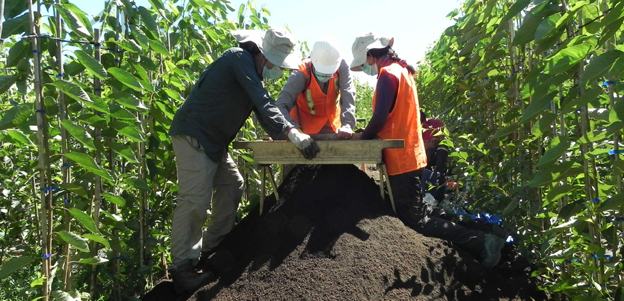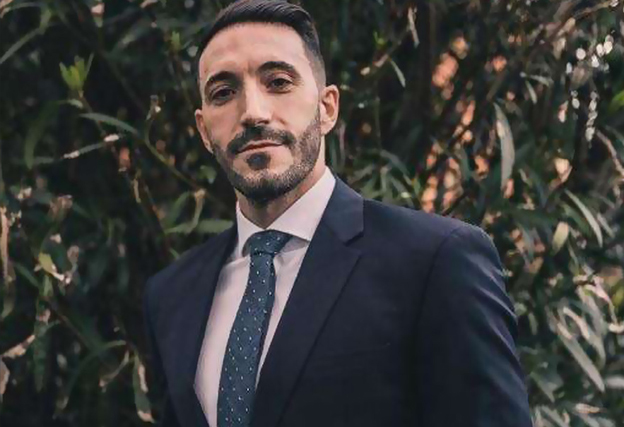The role of a company archeologist is becoming increasingly common, disproving a number of preconceptions about the possible contribution of archeology to technology companies. Stefano Abbate, EGP’s “Archaeology Specialist,” tells us more.

Searching for ancient artifacts and biological remains, studying human civilizations and cultures from times past: this is how most people would imagine the work of an archeologist. But it does not stop there: for some time now technology companies have been incorporating archeologists into their staff structure. Why should an archeologist work for a technology company? We asked Stefano Abbate, Archaeology Specialist Italy at the EAB (Environment, Archaeology, Biodiversity) Unit of Engineering and Construction at Enel Green Power.
What’s the role of archeologists in the current energy transition?
Often, when we imagine green jobs, we think of those that are strictly technical and linked to the installation of renewable energy plants. There is, however, a far broader meaning. My work, for example, consists of finding the most appropriate solutions for developing clean energy projects while, at the same time, protecting architectural heritage. In this sense I am involved in the energy transition while trying to enhance artistic and historical heritage. This is also a very important aspect, especially in a country like Italy with its historical identity and its potential returns, such as in terms of the other purposes for which archeological sites can be used.
How is your typical working day?
I follow projects in all of their phases, from pre-feasibility studies all the way to the installation of the final solar panel or the last wind turbine. An important part of my work consists of interacting with the Superintendences for Cultural Heritage (which are part of the Ministry of Culture). Given that a large part of their staff is made up of archeologists, it’s very useful that there is someone at EGP who speaks their language in order to establish a relationship based on mutual trust and respect. This makes it easier to reduce the risk of misunderstandings while minimizing the impact on construction work.
Archeologists and construction sites. How is it possible to reconcile these apparently opposing worlds?
When a new construction site opens, we always organize a special event called “Archeological Induction,” a day of training and raising awareness about archeological issues. On this occasion I explain, for instance, that in the case of any discovery, work needs to stop, the remains mustn’t be touched and I should be contacted immediately so that I can carry out a site visit and begin all the necessary procedures. I’ve been pleasantly surprised to find that, in general, everybody seems to be very interested in archeological matters.

Stefano Abbate, Archaeology Specialist Italy at Enel Green Power
How have new technologies changed the work of the archeologist?
Many people, when they think of an archeologist, imagine someone toiling away with a brush and trowel. In reality, our work has changed a lot and has benefited from new technologies. For example, we can conduct preliminary analyses of sites and study the sub-surface profile without having to dig, thanks to innovative detection tools like ground-penetrating radar, magnetometers, Laser Imaging Detection and Ranging (LIDAR), as well as Automated Resistivity Profiling (ARP), which studies the ground based on certain electric features. In actual fact, ARP enabled us to identify an ancient domus (town house)at a location that we had selected as a construction site in central Italy. We therefore revised the project and removed that portion of the site from the area we were working on before doing anything on the ground.
Have you ever made an archeological discovery during your work in the field?
I’ll answer with an example. In Sicily, during a surface survey, we identified a significant archeological structure dating back to the Iron or Bronze Age, maybe even earlier, to the Copper Age. It was a tomb that had been dug into a wall of rock as if it was an entrance into a cave. It had not been recorded on any municipal or regional register, so that means that it was our discovery and we reported it to the Superintendence and all the other relevant bodies. It should be pointed out that it was not just my contribution but the work of all the team involved.
What happens when you find archeological remains during site activities?
These are the crucial moments in my work. But also in these cases, the effect of the event can be enhanced. Let me give you another example: during the excavation work for a solar plant in northern Lazio, we discovered some pottery remains dating back to Etruscan-Roman times. We removed them and we are now working in the lab to put them together, restore them and date them more precisely. Thanks to our work and cooperation, the Superintendence is considering the idea of placing them in a local museum and producing a brochure, possibly followed by a fully-fledged scientific paper.
In conclusion, as an expert with a foot in both camps, what do you think about the debate between the cultures of the humanities and science?
I think that archeology and engineering, and more generally, the humanities and technical-scientific disciplines should not be considered as separate or even conflicting worlds which, unfortunately, is often the case. On the contrary, I think that it is important to enhance their potential synergies. And that is what we are trying to do at EGP.
KeyFacts Energy Industry Directory: Enel Green Power
 KEYFACT Energy
KEYFACT Energy